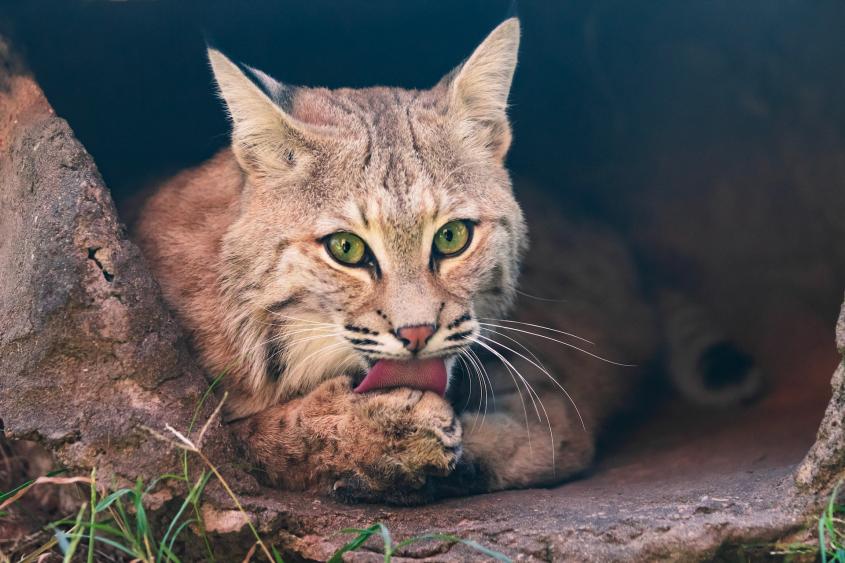New coronaviruses in Northeast mammals discovered by Cornell-led team
Faculty members from the Department of Public and Ecosystem Health have discovered coronaviruses in wild carnivores that had never been reported in these species before. The research, published in Journal of Virology, expands knowledge of coronaviruses’ diversity hosted in wildlife, a crucial step to understand the potential in cross-species transmission of these viruses.
“Very little coronavirus discovery research has been conducted in North America, and mostly it has focused on bats,” says Laura Goodman, Ph.D. ’07, assistant professor in the Department of Public and Ecosystem Health and the Baker Institute for Animal Health.
Goodman co-authored the study along with colleagues from Columbia University, the University of New Hampshire and five other faculty members from the Department of Public and Ecosystem Health: Dr. Krysten Schuler, Dr. Elizabeth Bunting, Kevin Cummings, Ph.D. ’10, D.V.M. ’96, Dr. Michael Stanhope, and Dr. Gary Whittaker, section chief in infectious disease epidemiology in the department and the James Law Professor of Virology in the Department of Microbiology and Immunology.
To fill the knowledge gap, the multi-institutional team surveyed the coronaviruses infecting free-ranging wild carnivores and feral domestic cats in the northeastern United States. They sequenced genetic material from 321 samples belonging to nine species, and detected the presence of coronaviruses in four of them: fisher, bobcat, red fox and feral domestic cat. These detected coronaviruses belonged to a group called Luchacovirus. None of these animals had COVID-19.
There are many types of coronaviruses that infect both wild and domesticated animals. Scientists classify coronaviruses into four genera, Alpha-, Beta-, Gamma-, and Deltacoronavirus. The Betacoronavirus genus includes SARS-CoV-2, responsible for COVID-19. Luchacoviruses are a subgroup of Alphacoronaviruses which includes viruses of veterinary importance like feline and canine coronavirus.
The Luchacoviruses of this study were interesting on two levels. First, Luchacoviruses had only been described in rodents and rabbits so far. Second, each of these Luchacoviruses were genetically different from each other and from the known Luchacoviruses, highlighting the need to expand the documentation of coronaviruses in the wild and their range of hosts.
Goodman and her coworkers also sequenced a part of the virus’s Spike gene called the cleavage site, often needed by coronaviruses to enter a host cell. Looking at the cleavage sequence of the new Luchacoviruses, the team observed it is different to that of SARS-CoV-2 — suggesting that these Luchacoviruses do not use the same mechanism as SARS-CoV-2 to enter cells.
The team is now planning to study the basic biology of the newly discovered Luchacoviruses to assess their potential for cross-species transmission between wild and domesticated animals. “The Northeast United States is a potential ‘hotspot’ for cross-species transmission, with high densities of humans, domestic animals, and urban wildlife that could harbor unexplored viruses and that could pose risks to humans,” says Dr. Ximena Olarte-Castillo, postdoctoral researcher in the Goodman and Whittaker labs and lead author on the paper.
Coronaviruses are well known to recombine across animal species, so knowing the potential reservoirs is critical for One Health approaches to planning for future pandemics events, integrating humans, animals and the environment.
To continue their effort to document coronaviruses transmission between species, Goodman and her colleagues from Columbia University are now tracking the movements of New York City wild animals, using this data to model their interaction networks and the evolution of the viruses as they circulate in these hosts.
The study was funded from a generous gift from Cynthia Suprenant (via the Public and Ecosystem Health Impact Award) and the Alfred P. Sloan Foundation.
Written by Elodie Smith





